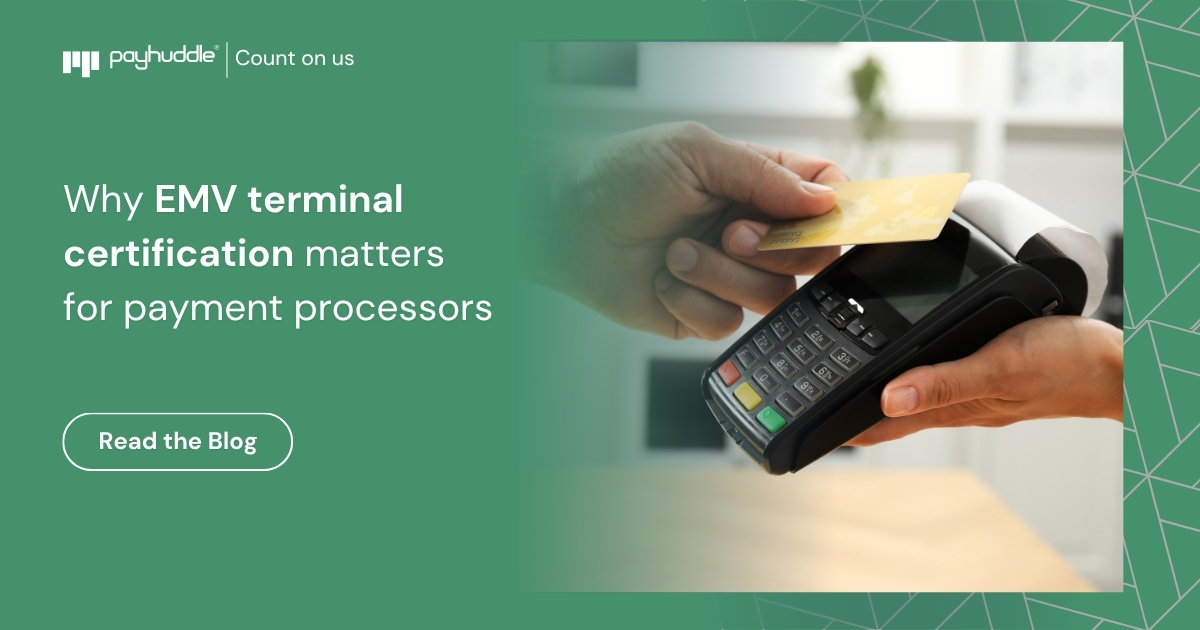
When tapping or inserting a credit card at a store, most people never think about what ensures that the transaction works securely.
For payment processors, however, the magic behind that "approved" message lies in EMV terminal certification.
This step is very important for making payments. It keeps everything running smoothly and safely between a new payment terminal and a live consumer transaction.
Before you can use a card reader or point-of-sale equipment in the real world, it must pass a battery of tests set by the EMV standards organization and the main card networks (Visa, Mastercard, Discover, Amex, etc.).
These tests check that the terminal can scan chip cards accurately, handle transaction data appropriately, and talk to banks without making mistakes. It helps check the safety and quality of payment devices.
The focus of EMV Level 3 (L3) certification is on how well the terminal integrates with the processor's systems and the card networks' needs. It essentially verifies if the terminal will play nicely in the payments ecosystem.
EMV chips were introduced to combat card fraud (they're much harder to clone than magnetic stripes).
L3 certification checks that the terminal properly implements cryptographic checks and security steps dictated by EMV and each payment network.
If this step were skipped, there's a risk that a terminal might approve fraudulent transactions or mishandle sensitive data, which is a nightmare scenario for processors and merchants.
A certified terminal is proven to work with all kinds of cards and scenarios, which include different issuing banks, credit or debit, domestic or foreign cards, tap or insert, you name it.
Certification ensures a Chase Visa card, an international Mastercard, or a local credit union card all get processed correctly under the right rules.
For a processor, this means fewer headaches down the line; a certified terminal is far less likely to encounter random errors or cause transaction rejects due to software bugs.
The payment networks require it.
If a processor allowed uncertified terminals to transact on their system, they'd be in violation of network rules, potentially facing fines or penalties.
There's also the EMV liability shift. For example, suppose a fraudulent transaction happens on a non-EMV (or non-certified) terminal. In that case, the liability for that fraud often falls on the party with the weaker technology (which could be the merchant or processor).
So, there's a direct financial incentive to ensure every terminal is certified and up-to-date.
Processors have a duty to their merchants to guide them through this because a failed certification or skipped step could mean a terminal isn't allowed to process. This effectively will halt a merchant's ability to take card payments.
Imagine a new smart POS device that promises quicker checkout or better customer interaction. A merchant is excited to deploy it, and a processor is on board to support it.
Now, without an efficient certification, that device might sit in a box for months.
EMV certifications in the U.S. often take several months per device and cost tens of thousands of dollars due to the extensive testing required.
Every week of delay is a week that merchants aren't benefiting from the new technology, and processors aren't earning transaction fees from it. Thus, speeding up certification (while keeping it rigorous) has real business consequences. It lets innovation reach the market sooner.
In short, EMV terminal certification is important to payment processors since it is the key to confidence and efficiency in the payment system.
It makes sure that security is built in, transactions go through correctly, and everyone (banks, networks, merchants, and customers) can do business with confidence. You can't skip it or skimp on it; executing it well sets you apart from the competition.
A processor that can swiftly and successfully approve new terminals helps its merchant clients stay ahead of the curve in payment technology.
As we look at the U.S. scene, where hundreds of thousands of terminals are approved every year, the processors that make this process seamless and strong are building the future of business.
EMV accreditation may not be showy, but it does the important job of making sure that payments go through safely and smoothly.